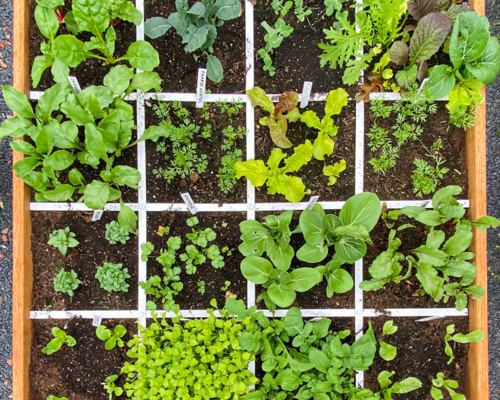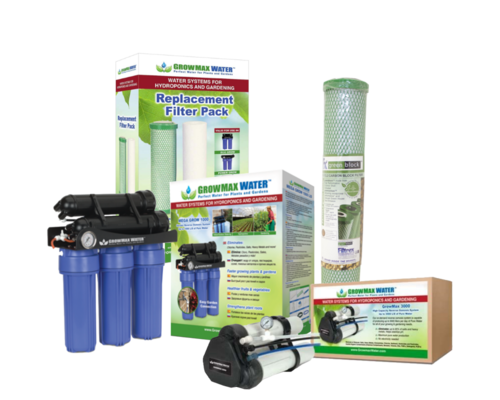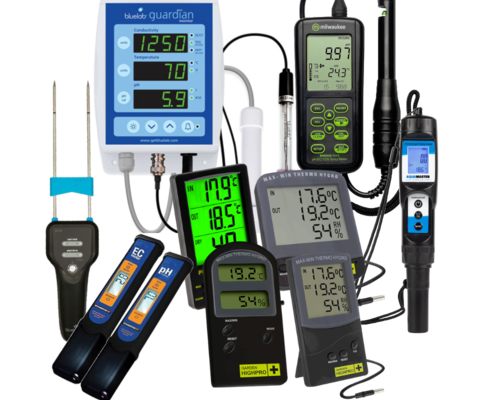What types of grow lights are there?
Grow lights are an important part of indoor horticulture. They are used to help plants grow and flourish just when natural sunlight is not present. In this blog post, we will discuss the different types of grow lights types, how they work and and light spectra.
Different types of grow lights
There are different types of grow lights available, including HPS (high pressure sodium), MH (metal halide) and LED (light emitting diode). HPS lamps are a popular choice among gardeners because they give off a lot of heat and produce a broad spectrum of light, making them suitable for both the growing and flowering phases of plants. MH lamps, on the other hand, produce more blue light, which is better for the growth phase of plants. LED lamps are the latest technology and produce less heat than HPS or MH lamps, making them more energy efficient. LED grow lights have continued to evolve in recent years and are increasingly being sold today.
It is important to note that different plants require different amounts of light to grow and flower. For example, leaf plants need less light than flowering plants. In addition, plants in the growth phase need more blue light than plants in the flowering phase. Therefore, gardeners must consider the specific requirements of their plants when choosing grow lights.
Light spectra of grow lights
There are different types of spectra to which plants are sensitive. The main spectrum to which plants are sensitive is the light spectrum near the red and blue region. This is often referred to as the photosynthetically active spectrum. The red region of the spectrum is associated with photosynthetic activity and flowering, while the blue region is associated with growth of stems and leaves. There are also other spectra that plants respond to, such as infrared and ultraviolet light.
There are different parts of the light spectrum that are important for plant growth:
- Red light (620-750 nm) is used for plant photosynthesis and flowering.
- Blue light (400-520 nm) is used for stem growth and chlorophyll development.
- Green light (500-600 nm) is often reflected off leaves and has no direct effect on plant growth.
- Infrared (750-3000 nm) is used for thermophylysis and can aid in root development.
It is important to note that plants require a broad spectrum of light for healthy growth and that each part of the spectrum plays its own specific role in plant growth.
Distance from your crop
Another important aspect to keep in mind is the distance of the lamp from the plants. The closer the lamp is to the plants, the more light the plants will receive. However, if the lamp is too close to the plants, it can cause overheating, which can burn the plants. Therefore, it is important to determine the proper distance for the specific grow lamp you are using. For example, you can hang an LED grow light much closer to the crop than an HPS or MH grow light.
HPS grow lamps or high pressure sodium grow lamps
HPS (high pressure sodium) grow lights are a popular choice among gardeners because of their efficiency and broad spectrum of light. Here are some advantages and disadvantages of HPS grow lights:
- Broad spectrum of light: HPS lamps produce a broad spectrum of light, meaning they emit both blue and red light. This makes them suitable for both the growing and flowering phases of plants. Not every HPS grow lamp features a "Full Spectrum," pay close attention to the color temperature.
- High light intensity: HPS lamps produce high light intensity, which means they emit a lot of light. This is ideal for plants that need a lot of light to grow and flower.
- A lot of heat: HPS lamps produce a lot of heat. This can be an advantage for plants that need a lot of heat to grow well, such as heat-loving plant species.
- Long lifespan: HPS lamps have a long lifespan. They can last as long as six months to a year before needing to be replaced. After this time, the light intensity will decrease, resulting in lower yields from your crop.
- Efficiency: HPS lamps are very efficient, using little energy to produce a lot of light.
However, it is also important to keep in mind that HPS lamps produce a lot of heat and this can be a disadvantage for plants that cannot tolerate heat. In addition, the heat they produce can lead to higher energy consumption for cooling. Therefore, it is advisable to consider the specific requirements of your plants before using an HPS lamp.
LED grow lights
LED (light emitting diode) grow lights are the latest technology in indoor horticulture and have a number of advantages over traditional grow lights such as HPS and MH. Here are some advantages of LED grow lights:
- Energy efficiency: LED lights are very energy efficient, using less energy than other grow lights to produce the same level of light. This can lead to lower energy costs and environmental impact.
- Long lifespan: LED bulbs have a long lifespan. They can last as long as 50,000 to 100,000 hours before needing to be replaced, which is much longer than the lifespan of other grow lights.
- Less heat: LED lights produce less heat than other grow lights, such as HPS and MH. This can result in lower cooling costs and less stress for the plants.
- Wider spectrum: LED lamps have a wide range of light colors, giving the grower the ability to choose specific colors that best suit the growth stage of the plants.
- Adaptability: LED lights are easy to adjust to the growth stage of the plants, this is because most LED lights have a built-in dimmer, some LED lights have multiple switches to adjust the spectrum.
- Compact and light: LED bulbs are often compact and light, making them easy to move and install.
However, LED lights are often more expensive than other grow lights and it is important to choose good quality LED lights.
Metal halide grow lights or MH lamps
MH (metal halide) grow lights are a popular choice among gardeners because of their efficiency and broad spectrum of light. Here are some advantages of MH grow lights:
- Broad spectrum of light: MH lamps produce a broad spectrum of light, most MH lamps are intended for the growth phase of your crop, there are also "Full Spectrum" MH lamps available.
- High Light Intensity: MH lamps produce high light intensity, meaning they emit a lot of light. This is ideal for plants that need a lot of light.
- Long lifespan: MH lamps have a long lifespan. They can last as long as six months to a year before needing to be replaced.
- Efficiency: MH lamps are energy efficient, producing a lot of light for little energy.
- Suitable for specific plants: MH lamps are often suitable for specific plants, such as orchids and cacti, which need a lot of blue light.
However, MH bulbs produce a lot of heat; this can be a disadvantage for plants that have poor heat tolerance. In addition, the heat they produce can lead to higher energy consumption for cooling. Therefore, it is advisable to consider the specific requirements of your plants before using an MH lamp.
Can too much light from a grow light be harmful?
Yes, too much light can be harmful to a plant. Just like too little light, overexposure to light can cause stress to a plant. This can lead to burning of leaves, reduction in growth, and even death of the plant. In addition, too much light can lead to a lack of water and nutrients as the plant works too hard to absorb energy.
Therefore, it is important to strike a balance between sufficient light and not too much light for a specific plant. This can be achieved by choosing the right kind of plants for the amount of light available in a specific space, and by using a timer or time clock to control the amount of hours of light.
What if a plant gets too little light?
When a plant receives too little light, it can lead to several problems. Some of the most common symptoms of too little light are:
- Slowed growth: Plants that receive too little light often grow more slowly than healthy plants.
- Thin stems: Plants that receive too little light will often develop thin, weak stems instead of sturdy, thick stems.
- Yellow leaves: Plants that receive too little light will often develop yellow leaves because the chlorophyll in the leaves is less active.
- Long internodes: The distance between buds on the stem may increase as the plant tries to reach the light.
- Delayed flowering: Plants that receive too little light are often less likely to produce flowers or no flowers.
It is important to remember that every plant is different and that some plants have specific light needs. For example, some plants can thrive in low light conditions, while other plants need lots of light. Therefore, it is important to know a plant's specific light needs before purchasing and placing it.
Do you want more information?
Want more information on a specific topic? Check our "Knowledge Center" blog page to see if the information you need is among them. Is the information not in one of our blogs? We have a piece of text with each category where the products are explained in broad terms. The most popular categories are:




